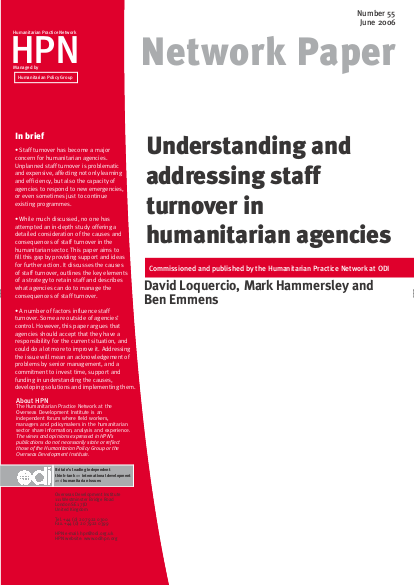
Over the past ten years, staff turnover has
become a major concern for humanitarian
agencies. It has sometimes been presented as a
reality humanitarian agencies have to live with,
but it has also been blamed for reducing the
effectiveness of programmes as a result of
discontinuity in staffing and loss of institutional
memory. Yet, while much discussed, no one has
attempted an in-depth study offering a detailed
consideration of the causes and consequences
of staff turnover in the humanitarian sector.
This paper aims to fill this gap by providing
guidance and ideas for further action at agency
and sector level. It is based on research by
People In Aid and the Emergency Capacity
Building Project,1 and over 200 interviews with
aid workers, humanitarian organisations,
think-tanks and donor agencies.2 During this
work, we found that most humanitarian
agencies welcome a degree of staff turnover: it
offers them more flexibility in relocating staff,
brings in fresh analysis and can be used as an opportunity
to develop staff through a series of more challenging
assignments. However, there is also a consensus that
unplanned staff turnover is problematic and expensive,
affecting not only learning and efficiency, but also the
capacity of agencies to respond to new emergencies, or
even sometimes just to continue existing programmes